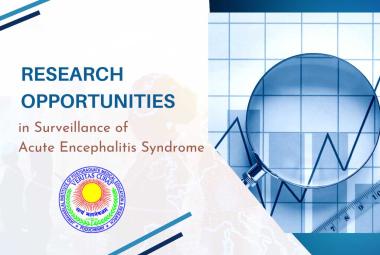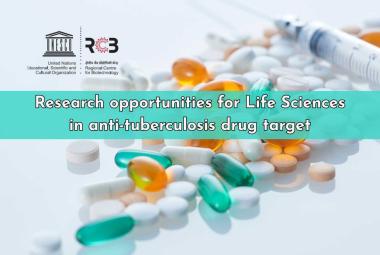REFERENCES:
1. Ahmed, I., H.-Y. Liu, et al. "Three-dimensional nanofibrillar surfaces covalently modified with tenascin-C-derived peptides enhance neuronal growth in vitro."Journal of Biomedical Materials Research Part A, 2006, 76A(4): 851-860.
2. Ao, Q., A. J. Wang, et al. "Combined transplantation of neural stem cells and factory unsheathing cells for the repair of spinal cord injuries." Medical Hypotheses, 2007, 69(6): 1234-1237.
3. Bain, G., D. Kitchens, et al. "Embryonic stem cells express neuronal properties in Vitro." Developmental Biology 1995, 168(2): 342-357.
4. Baker, B. M., A. O. Gee, et al. "The potential to improve cell infiltration in composite fiber-aligned electro spun scaffolds by the selective removal of sacrificial fibers." Biomaterials 2008, 29(15): 2348-2358.
5. Belle, J. E. L., M. A. Caldwell, et al. "Improving the survival of human CNS precursor-derived neurons after transplantation." Journal of Neuroscience Research 2004, 76(2): 174-183.
6. Beniash, E., J. D. Hartgerink, et al. "Self-assembling peptide amphiphiles nanofiber matrices for cell entrapment." Act a Biomaterial 2005, 1(4): 387-397.
7. Blight, A. R. "Effects of silica on the outcome from experimental spinal cord injury: Implication of macrophages in secondary tissue damage." Neuroscience, 1994, 60(1): 263-273.
8. Borkenhagen, M., R. C. Stoll, et al. "In vivo performance of a new biodegradable polyester urethane system used as a nerve guidance channel." Biomaterials 1998, 19(23): 2155-2165.
9. Boudriot, U. and R. D. A. G. J. H. Wendorff. "Electro spinning Approaches Toward Scaffold Engineering: A Brief Overview." Artificial Organs, 2006, 30(10): 785-792.
10. Breedveld, V., A. P. Nowak, et al. "Rheology of block co polypeptide solutions: hydro gels with tunable properties." Macromolecules 2004, 37(10): 3943-3953.
11. Bundesen, L. Q., T. A. Scheel, et al. "Ephrin-B2 and EphB2 regulation of astrocytemeningeal fibroblast interactions in response to spinal cord lesions in adult rats." Journal of neuroscience, 2003, 23(21): 7789-7800.
12. Busch, S. A. and J. Silver. "The role of extracellular matrix in CNS regeneration."Current Opinion in Neurobiology, 2007, 17(1): 120-127.
13. Carlberg, B., M. Z. Axell, et al. "Electro spun polyurethane scaffolds for proliferation and neuronal differentiation of human embryonic stem cells." Biomedical Materials, 2009, 4(4): 045004.
14. Du C., Cui F.Z., Feng Q.L., Zhu X.D. and de Groot K., “Tissue Response to Nano Hydroxyapatite/Collagen Composite Implants in Marrow Cavity”, J. Biomed. Mater. Res., 1998, 42, 540-548.
15. Frenot A, Chronakis I, Polymer nanofiber assembled by electro spinning. Curr Opin Coll Inter Sci, 2003, 8:64–75.
16. Fridrikh SV, Yu JH, Brenner MP, et al. Controlling the fiber diameter during electro spinning. Phys Rev Lett, 2003, 90:144502–1, 144502–4.
17. Funhoff AM, Monge S, Teeuwen R, et al. PEG shielded polymeric double-layered micelles for gene delivery. J Control Release, 2005, 102:711–24.
18. Geng X, Kwon OH, Jang J. Electro spinning of chitosan dissolved in concentrated acetic acid solution. Biomaterials, 2005, 26:5427–32.
19. Gersbach CA, Byers BA, Pavlath GK, et al. Runx2/Cbfa1-genetically engineered skeletal myoblasts mineralize collagen scaffolds in vitro.Biotechnol Bioeng, 2004, 88:369–78.
20. Goulet F, Rancourt D, Cloutier R, et al. Tendons and ligaments. InLanza RP, Langer R, Vacanti J (eds). Principles of tissue engineering.2nd ed. San Diego: Academic Pr., 2000, 711–22.
21. Hammel E, Tang X, Trampert M, et al. Carbon nanofiber for composite applications. Carbon, 2004, 42:1153–8.
22. Hartgerink JD, Beniash E, Stupp SI. Self-assembly and mineralization of peptide-amphiphile nanofibers. Science, 2001, 294:1684–8.
23. Hartgerink JD, Beniash E, Stupp SI. Peptide-amphiphile nanofibers: a versatile scaffold for the preparation of self assembling materials. Proc Natl Acad Sci USA, 2002, 99:5133–8.
24. Heller J, Hoffman AS. Drug delivery system. In Ratner BD, Hoffman AS, Schoen FJ, et al (eds). Biomaterial science: an introduction to materials in medicine. 2nd ed. San Diego: Elsevier Academic Pr., 2004, p 629–48.
25. Hoerstrup SP, Vacanti JP. Overview of tissue engineering. In Ratner BD, Hoffman AS, Schoen FJ (eds). Biomaterial science: an introduction to materials in medicine. 2nd ed. San Diego: Elsevier Academic Pr. 2004, p 712–27.
26. N.W.S. Kam, T.C. Jessop, P.A. Wender, H. Dai, J. Am. Chem.Soc. 2004, 126, 6850
27. Q. Lu, J.M. Moore, G. Huang, A.S. Mount, A.M. Rao, L.L.Larcom, P.C. Ke, Nano Lett. 2004, 4, 2473.
28. Stitzel J. et al control fabrication of a biological vascular substitution. Biomaterials 2006, 27:1088-1094.
29. Simon Timothy M et al, Clinical Orthopaedics and Related Research, October 1999- Volume 367, pp S31-S45
30. Wang X., Li Y., Wei J. and de Groot K., “Development of Biomimetic Nanohydroxyapatite/Poly (Hexamethylene Adipamide) Composites”, Biomaterials, 2002, 23, 4787-4791
31. Y. Liu, D. Wu, W. Zhang, X. Jiang, C. He, T.S. Chung, S.H. Goh, K.W. Leong, Angew. Chem. Int. Ed. 44, 2005, 4782









